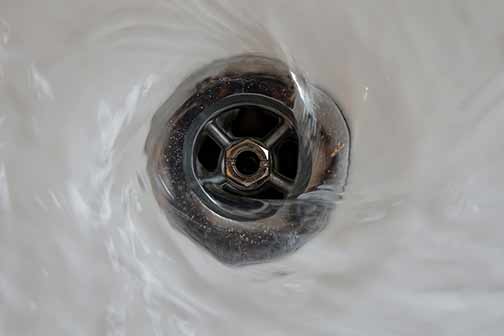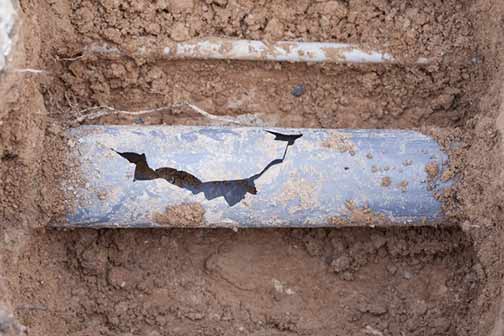
Maintaining your sewer line is crucial for the overall health and functionality of your home’s plumbing system. Regular inspections and timely repairs can prevent significant issues, such as blockages, leaks, and even complete system failures. Understanding the importance of sewer line maintenance can save you from costly repairs and potential health hazards.
Recognizing the Signs of Sewer Line Problems
One of the first steps in determining whether your sewer line needs replacement is recognizing the signs of potential problems. Common indicators include slow drains, frequent clogs, foul odors, and unusual sounds coming from your plumbing system. Additionally, if you notice any signs of water damage or mold growth in your home, it could be a sign of a leaking sewer line.
Identifying the Causes of Sewer Line Damage
Several factors can contribute to sewer line damage, including tree root intrusion, corrosion, shifting soil, and aging pipes. Tree roots are particularly notorious for causing blockages and cracks in sewer lines, as they seek out moisture and nutrients. Corrosion and rust can weaken pipes over time, leading to leaks and breaks. Shifting soil and ground movement can also put pressure on sewer lines, causing them to crack or collapse. Understanding the causes of sewer line damage can help you take preventive measures and address issues promptly.
Evaluating the Severity of Sewer Line Issues
Once you’ve identified potential sewer line problems, it’s essential to evaluate their severity. Minor issues, such as small leaks or blockages, can often be resolved with simple repairs. However, more severe problems, such as extensive corrosion, multiple cracks, or significant root intrusion, may require a complete sewer line replacement. Speaking with a professional plumber can help you accurately assess the severity of the issue and determine the best course of action.

Considering the Age of Your Sewer Line
The age of your sewer line is a critical factor in deciding whether replacement is necessary. Older sewer lines, particularly those made of clay or cast iron, are more prone to damage and deterioration. If your sewer line is over 50 years old, it’s a good idea to have it inspected regularly and consider replacement as a preventive measure. Modern sewer lines made of PVC or other durable materials are less susceptible to damage and can last significantly longer.
Weighing the Costs of Repair vs. Replacement
When faced with sewer line issues, it’s essential to weigh the costs of repair versus replacement. While repairs may be less expensive in the short term, they may not provide a long-term solution, especially if the sewer line is old or extensively damaged. On the other hand, replacement can be a more significant upfront investment but can save you money in the long run by preventing recurring issues and costly emergency repairs. Speaking with a professional plumber can help you make an informed decision based on your specific situation and budget.
Preparing for Sewer Line Replacement
Once you’ve decided to replace your sewer line, it’s essential to prepare for the process. Start by consulting with a professional plumber to determine the best replacement method for your situation. Obtain any necessary permits and inform your neighbors about the upcoming work, as it may cause temporary disruptions. Additionally, make arrangements for any landscaping or hardscaping that may need to be removed or restored during the replacement process. Proper preparation can help ensure a smooth and efficient sewer line replacement.
Maintaining Your New Sewer Line
After replacing your sewer line, it’s crucial to maintain it properly to ensure its longevity and functionality. Regular camera inspections of your sewer line can help prevent future issues and keep your plumbing system running smoothly. Avoid flushing non-biodegradable items, such as wipes and feminine hygiene products, down your drains, as they can cause blockages. Additionally, be mindful of what you pour down your sinks, as grease and oil can solidify and create clogs. Implementing these practices can help you maintain a healthy and efficient sewer line for years to come.

Speaking with Professional Plumbers
Throughout the process of identifying, evaluating, and addressing sewer line issues, speaking with professional plumbers is essential. Experienced plumbers can provide valuable insights, accurate assessments, and effective solutions tailored to your specific needs. They can also guide you through the decision-making process, helping you choose between repair and replacement options. Building a relationship with a trusted plumber can ensure that you receive reliable and timely assistance whenever sewer line issues arise.
Understanding the Environmental Impact of Sewer Line Replacement
Sewer line replacement can have environmental implications, particularly if traditional excavation methods are used. Digging up old sewer lines can disrupt the surrounding ecosystem and contribute to soil erosion. However, trenchless sewer line replacement methods offer a more environmentally friendly alternative by minimizing excavation and preserving the landscape. Additionally, modern sewer line materials are often more durable and less prone to leaks, reducing the risk of contamination and environmental damage. Considering the environmental impact of your sewer line replacement can help you make a more sustainable choice.
Exploring Financing Options for Sewer Line Replacement
Sewer line replacement can be a significant financial investment, and it’s essential to explore various financing options to manage the costs. Many plumbing companies offer financing plans that allow you to spread the cost of replacement over time. Additionally, some homeowners’ insurance policies may cover sewer line replacement if the damage is due to specific causes, such as sudden and accidental incidents. It’s also worth checking if your local government offers any grants or assistance programs for sewer line replacement. Exploring these options can help make the financial burden of sewer line replacement more manageable.
Staying Informed About Local Regulations and Codes
Before undertaking a sewer line replacement, it’s crucial to stay informed about local regulations and building codes. Different municipalities may have specific requirements for sewer line installation and replacement, including permits, inspections, and approved materials. Adhering to these regulations ensures that your replacement project is compliant and prevents potential legal issues. Speaking with your plumber and local building authorities can help you navigate these requirements and ensure a smooth and compliant replacement process.
Understanding the Long-Term Benefits of Sewer Line Replacement
While sewer line replacement may seem like a daunting and costly task, it’s essential to consider the long-term benefits. A new sewer line can provide improved functionality, reduced risk of blockages and leaks, and increased property value. Additionally, modern sewer line materials are more durable and resistant to damage, offering a longer lifespan and fewer maintenance needs. By investing in a sewer line replacement, you can enjoy peace of mind knowing that your plumbing system is reliable and efficient for years to come.
Summing it Up
In conclusion, knowing when to replace your sewer line is crucial for maintaining a healthy and functional plumbing system. By recognizing the signs of sewer line problems, understanding the causes and severity of damage, and speaking with professional plumbers, you can make informed decisions about repair and replacement. Additionally, exploring modern replacement methods, financing options, and environmental considerations can help you navigate the process more effectively. With proper maintenance and attention, your new sewer line can provide reliable service and peace of mind for many years.

